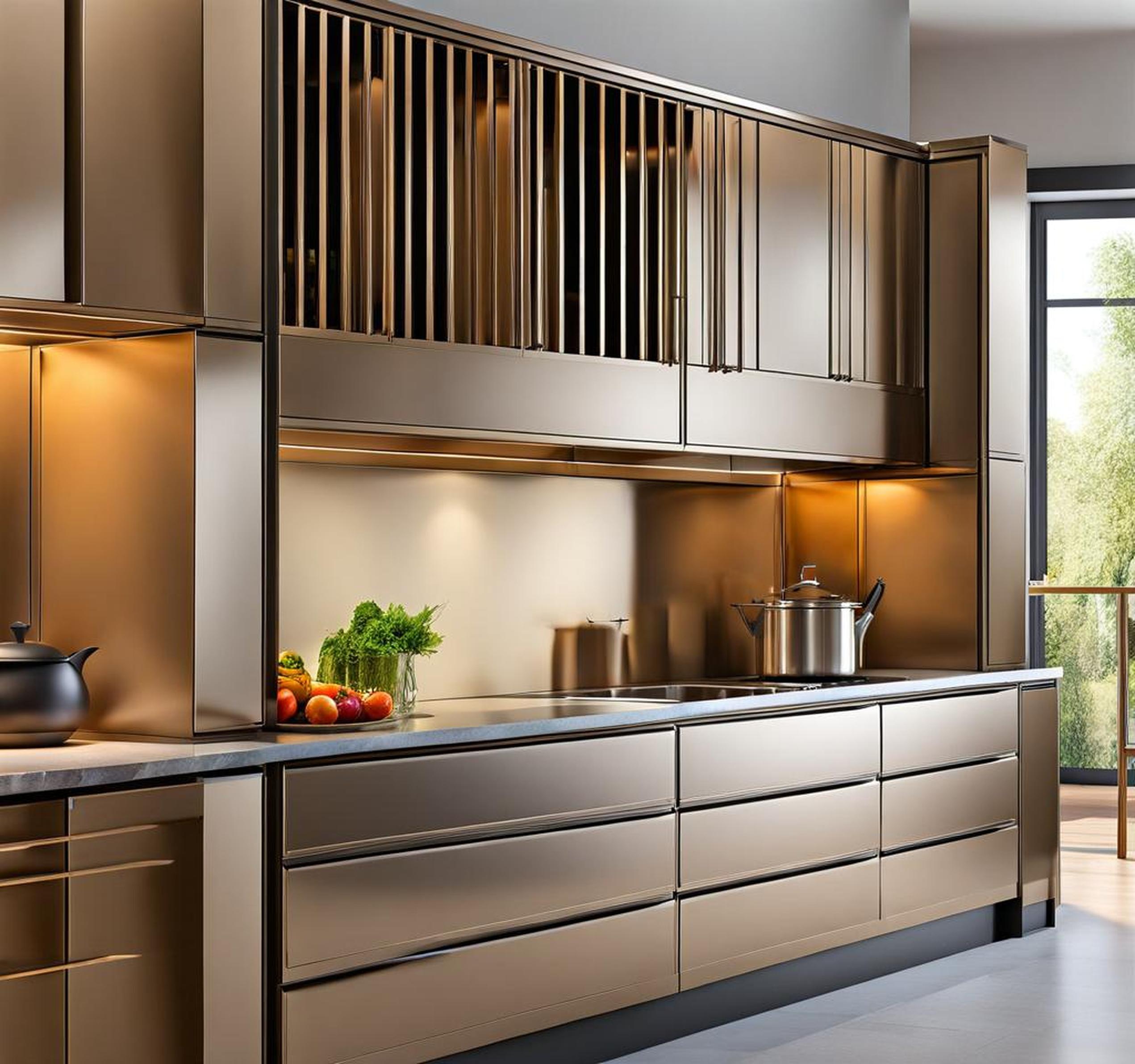Metal frame kitchen cabinets are the hottest trend in contemporary kitchen design. With their sleek, minimalist look and vast customization options, it’s no wonder these modern cabinets are surging in popularity.
But while metal frame cabinets make a stunning style statement, installing them requires precision and care. If you’re looking to install metal frame kitchen cabinets yourself, this complete guide will walk you through the process from start to finish.
Materials Needed for Installation
Before beginning the installation, you’ll need to ensure you have all the necessary materials:
- Metal frame cabinetry with all components
- Stud finder
- Level
- Cordless drill with driver bits
- Screwdrivers
- Mounting screws
- Filler material and caulk
- Finishing supplies like handles and knobs
It’s also helpful to have painter’s tape, shims, and wood glue on hand. Carefully check that your metal frame cabinets arrived undamaged with all accessories accounted for.
Preparing the Installation Space
Installing metal frame kitchen cabinets starts with prepping your workspace. First, remove your old cabinetry if you’re doing a remodel. Repair any holes or flaws in your wall surfaces. Using a stud finder, mark the locations of all wall studs in the space.

Next, map out your cabinet layout based on your room dimensions and design plans. Space the stud markings accordingly so you can screw into them later. Lay down drop cloths and clean the walls and floor before installation.
Mounting the Metal Frames
With your workspace prepped, it’s time to mount the metal cabinet frames. Have a helper lift each frame into place against the wall. Use painter’s tape to hold the cabinet temporarily.
Check that the cabinet is level. If needed, use shims between the wall and cabinet for alignment. Mark pilot hole locations through the cabinet back panel. Drill pilot holes then drive your screws securely into the wall studs.
Work on one cabinet at a time. Keep checking that each frame is plumb and level as you go. Avoid screwing through the frames themselves – only through the back panels.
Installing Doors, Drawers and Interior Fittings
Once all the cabinet frames are securely mounted, you can start adding the functional components.
Attach all hinges and pulls according to the manufacturer’s instructions. For soft-closing functionality, adjust the built-in dampers. Install any slides or glides for drawers and test for smooth operation.
Carefully insert any glass cabinet panels or inserts. Verify they are secure. Add adjustable shelves and other interior fittings. Build out any pull-outs, organizers or other storage accessories.
Integrating the Countertop
With the cabinetry installed, it’s time to integrate your countertop. Take very precise measurements of the full cabinet run. Have your countertop fabricated and delivered.
Carefully place the countertop on top of the cabinets. Align and shim as needed. Seal any seams with caulk. The close tolerance between the countertop and metal frames is what gives this style its sleek, floating appearance.
Finishing Touches
You’re in the home stretch! Conceal any small gaps around the cabinets with trim pieces. Complete any final adjustments to doors, draws or glass. Verify all motion and closure.
Clean all metal surfaces gently. Fingerprints show easily on metal finishes. Finally, install any pulls, knobs and backsplash pieces to complete your new dream kitchen!
Troubleshooting Common Metal Frame Cabinet Issues
Metal frame cabinets may sometimes run into minor issues. Here’s how to troubleshoot the most common problems:
- Frames out of alignment: Loosen mounting screws and use shims until properly aligned.
- Doors not closing flush: Adjust strike plate location or hinge mounting.
- Sticking drawers: Ensure drawer glides are properly aligned.
- Rattling glass: Tighten retaining clips or replace as needed.
Caring for Your New Metal Frame Cabinets
With the right maintenance, metal frame cabinets will stay beautiful for years:
- Clean gently with a microfiber cloth and mild cleaner.
- Avoid harsh chemicals and abrasives.
- Use glass cleaner and microfiber on glass surfaces.
- Lubricate hardware as needed with silicone spray.
- Touch up any paint or finish flaws promptly.
While installing metal frame kitchen cabinets requires precision, with the right prep and planning, you can tackle this project yourself. Just follow the steps outlined above.
The end result will be a modern, customized kitchen perfect for entertaining. Your guests are sure to be envious of your contemporary style and flawless attention to detail!
